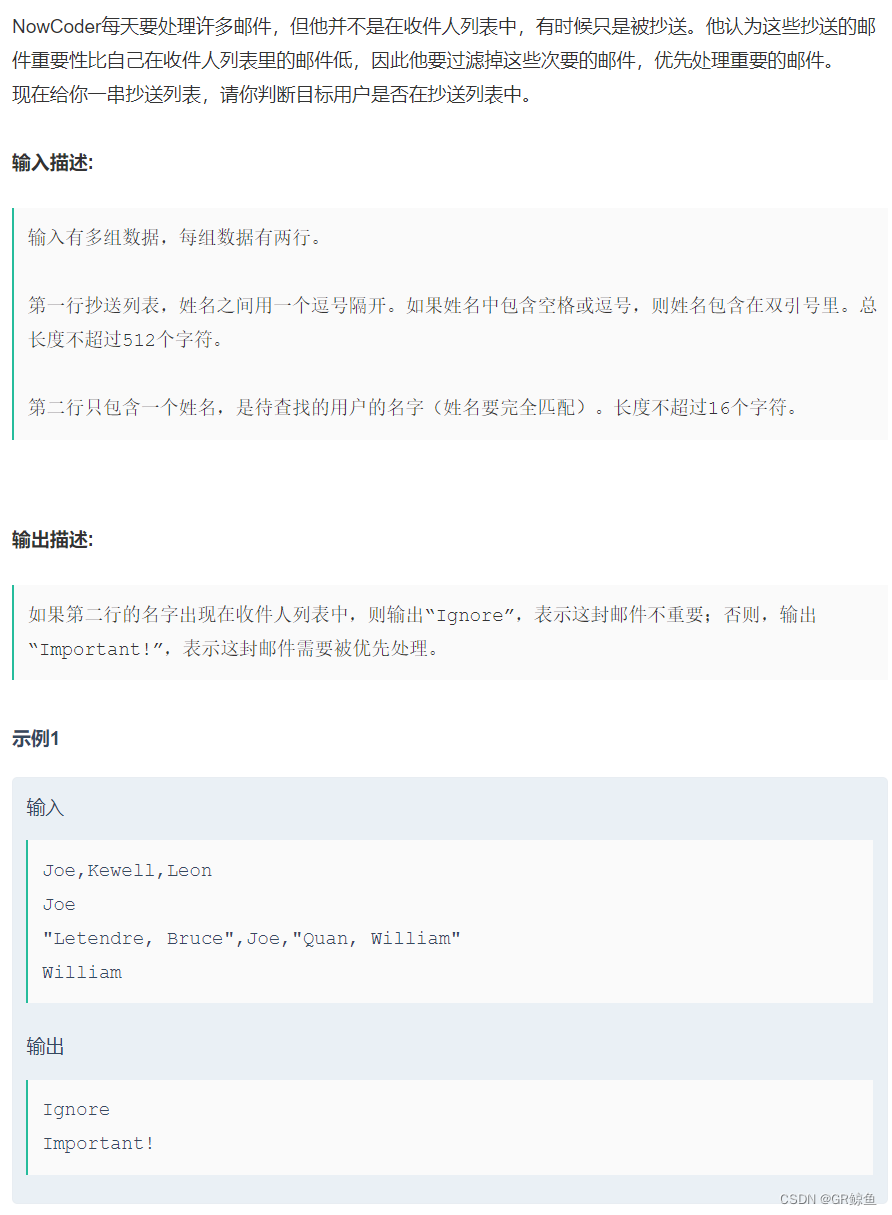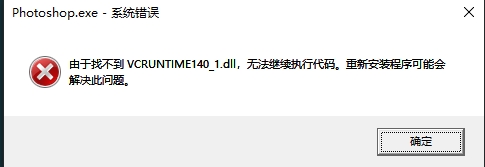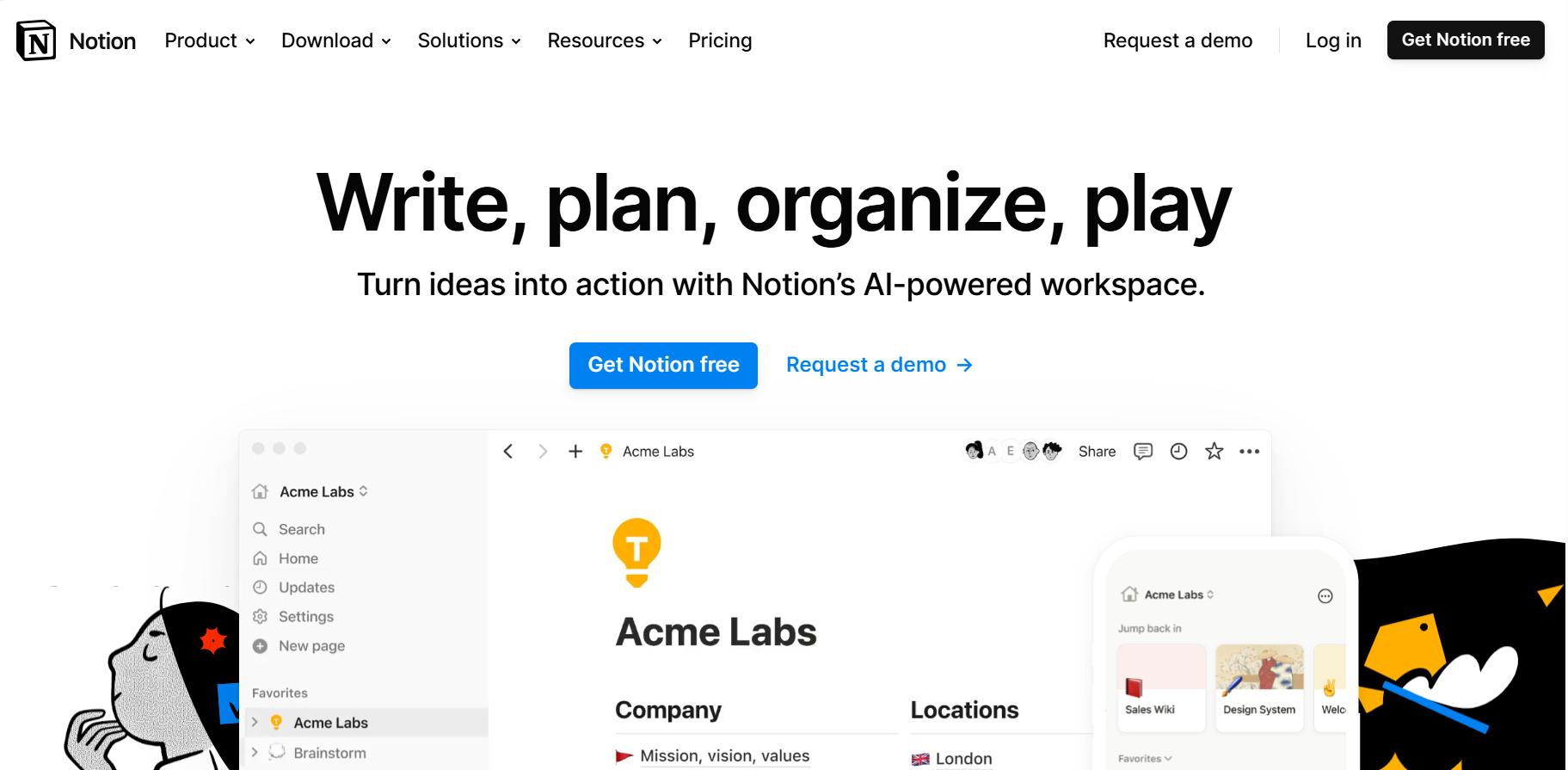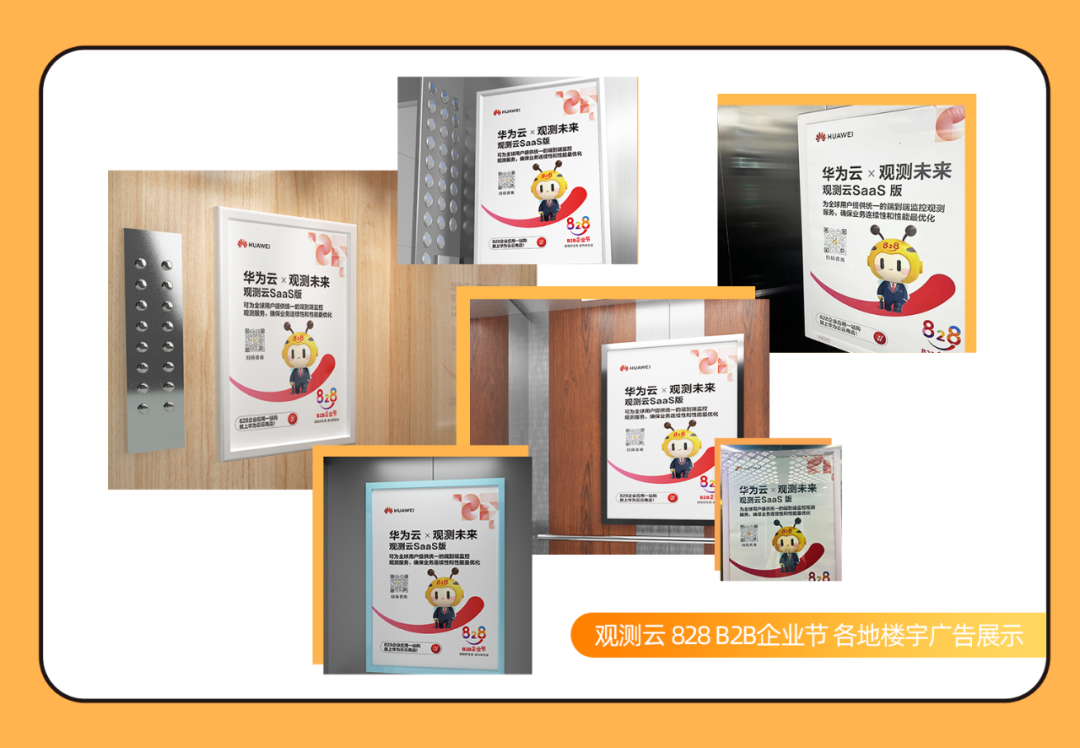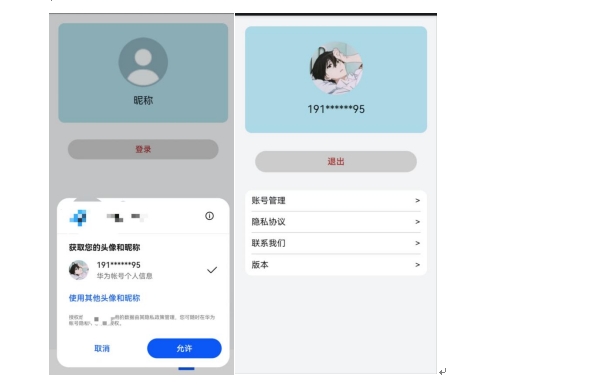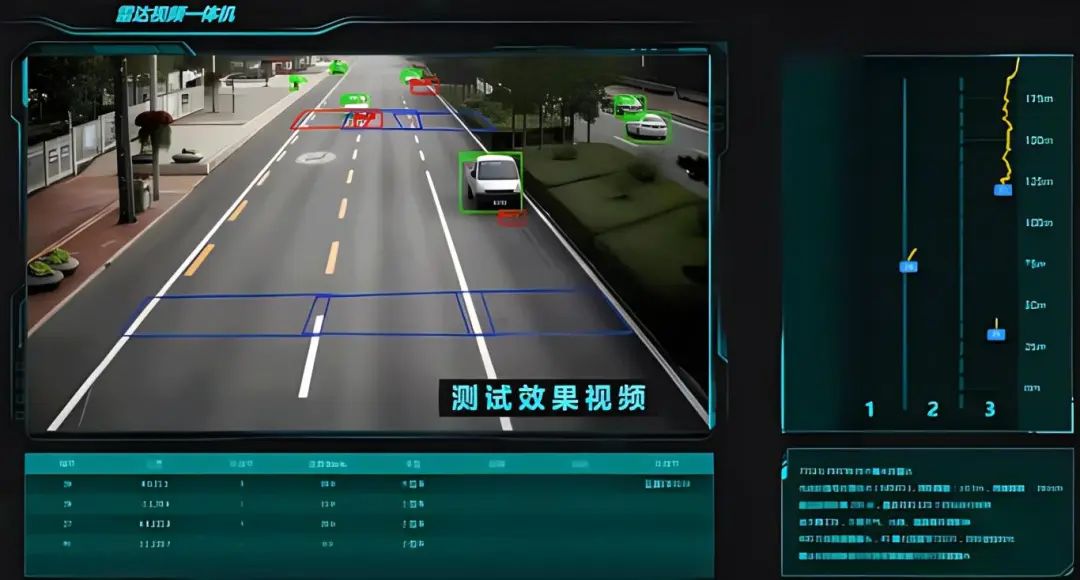文章目录
- 【README】
- 【1】JdbcTemplate概述
- 【1.1】Jdbc原生api操作数据库
- 【1.1.1】基于Jdbc+PreparedStatement批量更新
- 【1.2】JdbcTemplate概述
- 【1.2.1】JdbcTemplate类图
- 【1.2.2】使用DataSourceUtils管理Connection
- 【1.2.3】设置Statement参数(控制行为)
- 【1.3】JdbcTemplate中SQLException到DataAccessException的转译(统一异常类型)
- 【1.3.1】自定义异常转译器
- 【2】使用JdbcTemplate进行数据访问
- 【2.1】使用JdbcTemplate查询数据
- 【2.1.1】使用ResultSetExtractor处理查询结果集
- 【2.1.2】使用RowCallbackHandler处理查询结果集
- 【2.1.3】使用RowMapper处理查询结果集(推荐,因为代码简单)
- 【2.1.4】查询结果集处理接口总结
- 【2.2】使用JdbcTemplate更新数据
- 【2.2.1】使用JdbcTemplate单个更新
- 【2.2.2】使用JdbcTemplate批量更新(特别重要)*
- 【2.3】*spring对数据库主键生成策略的抽象
- 【2.3.1】*基于独立数据库主键表的 DataFieldMaxValueIncrementer(非常重要)
- 【2.3.2】基于数据库sequence的DataFieldMaxValueIncrementer
- 【2.4】 使用NamedParameterJdbcTemplate解析命名参数符号
- 【2.5】DataSource 数据源
- 【2.5.1】DelegatingDataSource委派数据源
- 【2.6】JdbcDaoSupport
- 【3】基于操作对象操作数据
- 【3.1】基于操作对象查询数据
- 【3.1.1】 MappingSqlQueryWithParameters
- 【3.1.2】MappingSqlQuery(最常使用)
- 【3.1.3】SqlFunction(MappingSqlQuery子类)
- 【3.1.4】UpdatableSqlQuery
- 【3.2】基于操作对象更新数据
- 【3.2.1】 SqlUpdate基本更新操作
- 【3.2.2】 BatchSqlUpdate批量更新操作
- 【3.3】总结
【README】
本文总结自《spring揭秘》,作者王福强,非常棒的一本书,墙裂推荐;
【1】JdbcTemplate概述
【1.1】Jdbc原生api操作数据库
1)使用jdbc操作数据库代码
【DaoViaJdbc】
public class DaoViaJdbc implements IDao {
public int update(String sql) {
Connection connection = null;
Statement statement = null;
try {
connection = getConnection();
statement = connection.createStatement();
return statement.executeUpdate(sql);
} catch (SQLException e) {
throw new RuntimeException(e);
} finally {
if (statement != null) {
try {
statement.close();
System.out.println("关闭statement成功");
} catch (SQLException e) {
System.out.println("关闭statement异常");
e.printStackTrace(System.err);// 仅演示,不要这么做
}
}
if (connection != null) {
try {
connection.close();
System.out.println("关闭connection成功");
} catch (SQLException e) {
System.out.println("关闭connection异常");
e.printStackTrace(System.err);// 仅演示,不要这么做
}
}
}
}
public static Connection getConnection() throws SQLException {
Properties props = new Properties();
ResourceLoader resourceLoader = new DefaultResourceLoader();
Resource resource = resourceLoader.getResource("classpath:chapter14/springdiscover_db.properties");
try (InputStream dbConnConfInputStream = resource.getInputStream()) {
props.load(dbConnConfInputStream); // 加载数据库连接信息的 .properties 文件
} catch (IOException ioException) {
throw new RuntimeException(ioException);
}
String drivers = props.getProperty("jdbc.drivers"); //数据库驱动器
if (drivers != null) System.setProperty("jdbc.drivers", drivers);
String url = props.getProperty("jdbc.url");
String username = props.getProperty("jdbc.username");
String password = props.getProperty("jdbc.password");
return DriverManager.getConnection(url, username, password); //利用驱动管理器打开一个数据库连接
}
}
2)使用jdbc原生api操作数据库的问题:并不是一条sql就是一个事务,就是一个连接;如果多条sql是一个事务,则上述需要修改,需要自定义操作jdbc api的代码;这会导致如下问题(简单理解是: jdbc原生api提供的是简单功能或原子功能,业务场景复杂多变,使用jdbc原生api实现业务功能,开发与运维成本高):
- 通过jdbc api操作数据库的代码本不属于业务功能代码,但却散落在系统各个业务逻辑中(散弹式代码);
- 操作jdbc api有技术门槛,如果操作不当,如数据库连接没有关闭,事务没有控制好,极易导致系统问题;
- 没有统一的异常类型确认机制;SQLException是一个比较泛的异常类,不足以说明异常原因;如主键冲突异常,非空异常等;
- 对于同一个异常原因,不同数据库定义的异常类型不一样? 岂不是换一个数据库,整个dao层代码都要重构? 我想这不是一个合理的设计 ;
- 对于同一个异常原因,不同数据库虽然使用相同的异常类,但使用不用的错误码;如mysql把errocode=1作为表示数据库连不上,而oracle把errorcode=2表示数据库连不上;
- 其他:jdbc原生api本身没有提供池化技术(数据库连接池),不满足性能要求;
基于此,我想一个良好的设计,大概思路是要封装jdbc的数据访问代码(如connection,statement),对外暴露封装后的代理对象或包装类对象;此外,应该还会统一异常类型及异常码,做到对数据库类型无感;由此 JdbcTemplate产生了;
【1.1.1】基于Jdbc+PreparedStatement批量更新
1)因为JdbcTemplate有批量更新的api,所以本文也贴出Jdbc批量更新的代码,以便对比;
【BatchUpdateViaJdbcMain】
public class BatchUpdateViaJdbcMain {
public static void main(String[] args) {
BatchUpdateViaJdbc batchUpdateViaJdbc = new BatchUpdateViaJdbc();
batchUpdateViaJdbc.batchInsert(Arrays.asList(
new UserDto("批量王五01", "12345678901", "成都01", "批量备注01")
, new UserDto("批量王五02", "12345678902", "成都02", "批量备注02")
));
}
}
【BatchUpdateViaJdbc】
public class BatchUpdateViaJdbc {
public int[] batchInsert(List<UserDto> userDtoList) {
String sql = "insert into user_tbl(name, mobile_phone, addr, remark) values(?, ?, ?, ?)";
Connection connection = null;
PreparedStatement preparedStatement = null;
try {
connection = ConnectionUtils.getConnection();
connection.setAutoCommit(false); // 设置手动提交
preparedStatement = connection.prepareStatement(sql);
// 批量设置占位符参数
for (UserDto userDto : userDtoList) {
preparedStatement.setString(1, userDto.getName());
preparedStatement.setString(2, userDto.getMobilePhone());
preparedStatement.setString(3, userDto.getAddr());
preparedStatement.setString(4, userDto.getRemark());
preparedStatement.addBatch();
}
// 执行批量更新
int[] resultArr = preparedStatement.executeBatch();
connection.commit();
return resultArr;
} catch (SQLException e) {
try {
connection.rollback();
} catch (SQLException ex) {
throw new RuntimeException(ex);
}
throw new RuntimeException(e);
} finally {
if (preparedStatement != null) {
try {
preparedStatement.close();
System.out.println("关闭statement成功");
} catch (SQLException e) {
System.out.println("关闭statement异常");
e.printStackTrace(System.err);// 仅演示,不要这么做
}
}
if (connection != null) {
try {
connection.close();
System.out.println("关闭connection成功");
} catch (SQLException e) {
System.out.println("关闭connection异常");
e.printStackTrace(System.err);// 仅演示,不要这么做
}
}
}
}
}
【1.2】JdbcTemplate概述
1)JdbcTemplate主要关注两件事情 :
- 封装所有基于jdbc的数据访问代码; 以统一格式和规范来使用jdbc api;
- 把jdbc的数据访问异常(SQLException及其子类,包括各数据库驱动提供的子类)进行统一转译,统一异常类型,简化客户端对数据访问异常的处理;
2)JdbcTemplate采用模板方法模式封装jdbc的数据访问代码; 模版方法模式作用是定义算法步骤,而由子类提供具体实现;
【DaoViaJdbcTemplate】通过JdbcTemplate实现dao层 ( 显然,与jdbc原生api相比,通过JdbcTemplate操作数据库,代码更加简洁 )
public class DaoViaJdbcTemplate {
public Integer update(String sql) {
JdbcTemplate jdbcTemplate = new JdbcTemplate(getDataSource());
StatementCallback<Integer> statementCallback = new StatementCallback<>() {
@Override
public Integer doInStatement(Statement stmt) throws SQLException {
return stmt.executeUpdate(sql);
}
};
return jdbcTemplate.execute(statementCallback);
}
public static DataSource getDataSource() {
Properties props = new Properties();
ResourceLoader resourceLoader = new DefaultResourceLoader();
Resource resource = resourceLoader.getResource("classpath:chapter14/springdiscover_db.properties");
try (InputStream dbConnConfInputStream = resource.getInputStream()) {
props.load(dbConnConfInputStream); // 加载数据库连接信息的 .properties 文件
} catch (IOException ioException) {
throw new RuntimeException(ioException);
}
DruidDataSource druidDataSource = new DruidDataSource();
druidDataSource.setDriverClassName(props.getProperty("jdbc.drivers"));
druidDataSource.setUrl(props.getProperty("jdbc.url"));
druidDataSource.setUsername(props.getProperty("jdbc.username"));
druidDataSource.setPassword(props.getProperty("jdbc.password"));
return druidDataSource;
}
}
【JdbcTemplate#execute】
@Nullable
public <T> T execute(StatementCallback<T> action) throws DataAccessException {
return this.execute(action, true);
}
@Nullable
private <T> T execute(StatementCallback<T> action, boolean closeResources) throws DataAccessException {
Assert.notNull(action, "Callback object must not be null");
Connection con = DataSourceUtils.getConnection(this.obtainDataSource());
Statement stmt = null;
Object var12;
try {
stmt = con.createStatement();
this.applyStatementSettings(stmt);
T result = action.doInStatement(stmt);
this.handleWarnings(stmt);
var12 = result;
} catch (SQLException var10) {
if (stmt != null) {
this.handleWarnings(stmt, var10);
}
String sql = getSql(action);
JdbcUtils.closeStatement(stmt);
stmt = null;
DataSourceUtils.releaseConnection(con, this.getDataSource());
con = null;
throw this.translateException("StatementCallback", sql, var10); // JdbcTemplate对jdbc原生异常SQLException进行转译
} finally {
if (closeResources) {
JdbcUtils.closeStatement(stmt);
DataSourceUtils.releaseConnection(con, this.getDataSource());
}
}
return var12;
}
protected DataAccessException translateException(String task, @Nullable String sql, SQLException ex) { // 具体异常转译方法
DataAccessException dae = this.getExceptionTranslator().translate(task, sql, ex);
return (DataAccessException)(dae != null ? dae : new UncategorizedSQLException(task, sql, ex));
}
【代码解说】
显然, jdcbTemplate会捕获SQLException异常,调用translateException()方法进行转译,转译为DataAccessException子类,如下。;

【1.2.1】JdbcTemplate类图
1)JdbcTemplate定义:继承JdbcAccessor, 实现 JdbcOperations接口
public class JdbcTemplate extends JdbcAccessor implements JdbcOperations {

2)JdbcAccessor类:主要为JdbcTemplate提供公用属性:
- DataSource(javax.sql.DataSource):数据源;可以看做是jdbc连接工厂,用来替代基于DriverManager的数据库连接创建方式(参见DaoViaJdbc);
- 具体实现类(如DruidDataSource)可以引入对数据库连接池以及分布式事务支持;
- DataSource可以作为数据库资源的统一接口;
- SQLExceptionTranslator:SQL异常转换器; 即把不同数据库类型的异常,不同错误码但根因相同的异常,转换为根因相同的统一异常;
public abstract class JdbcAccessor implements InitializingBean {
protected final Log logger = LogFactory.getLog(this.getClass());
@Nullable
private DataSource dataSource; // 数据源, 可以看做是jdbc连接工厂
@Nullable
private volatile SQLExceptionTranslator exceptionTranslator; // SQL异常转换器
private boolean lazyInit = true;
public JdbcAccessor() {
}
public void setDataSource(@Nullable DataSource dataSource) {
this.dataSource = dataSource;
}
......
}
3)JdbcOperations接口:定义了基于jdbc数据访问方法,包括查询query,更新update,执行execute,以及批量操作; 其中update可以执行增加删除修改等写操作;
public interface JdbcOperations {
<T> T execute(ConnectionCallback<T> action) throws DataAccessException;
@Nullable
<T> T execute(StatementCallback<T> action) throws DataAccessException;
<T> T execute(PreparedStatementCreator psc, PreparedStatementCallback<T> action) throws DataAccessException;
int update(String sql) throws DataAccessException;
<T> List<T> query(PreparedStatementCreator psc, RowMapper<T> rowMapper) throws DataAccessException;
@Nullable
<T> T queryForObject(String sql, Object[] args, int[] argTypes, RowMapper<T> rowMapper) throws DataAccessException;
Map<String, Object> queryForMap(String sql, Object[] args, int[] argTypes) throws DataAccessException;
<T> List<T> queryForList(String sql, Object[] args, int[] argTypes, Class<T> elementType) throws DataAccessException;
int[] batchUpdate(String... sql) throws DataAccessException;
@Nullable
<T> T execute(CallableStatementCreator csc, CallableStatementCallback<T> action) throws DataAccessException;
......
}
@FunctionalInterface
public interface ConnectionCallback<T> {
@Nullable
T doInConnection(Connection con) throws SQLException, DataAccessException;
}
@FunctionalInterface
public interface StatementCallback<T> {
@Nullable
T doInStatement(Statement stmt) throws SQLException, DataAccessException;
}
@FunctionalInterface
public interface PreparedStatementCallback<T> {
@Nullable
T doInPreparedStatement(PreparedStatement ps) throws SQLException, DataAccessException;
}
@FunctionalInterface
public interface CallableStatementCallback<T> {
@Nullable
T doInCallableStatement(CallableStatement cs) throws SQLException, DataAccessException;
}
4)JdbcTemplate中各种模版方法,可以分为如下4组:
-
ConnectionCallback面向Connection的模版方法:基于Connection访问数据的回调方法,不建议,因为Connection操作数据库逻辑复杂,如一个连接多个statement,涉及到连接关闭,事务管理等;
-
StatementCallback面向Statement的模版方法:基于Statement处理静态sql的数据访问请求;
-
PreparedStatementCallback面向PreparedStatement的模版方法:基于PreparedStatement处理包含参数的sql的数据访问请求; 此外,使用 PreparedStatement 可以避免sql 注入攻击;
-
CallableStatementCallback面向CallableStatement的模版方法:主要处理存储过程;( 不推荐存储过程,因为移植性非常差 )
【1.2.2】使用DataSourceUtils管理Connection
1)获取数据库连接:使用 DataSourceUtils.getConnection(DataSource) 获取连接; 与直接从DataSource获取连接不同的是,DataSourceUtils获取连接会将取得的 Connection 绑定到当前线程(底层通过ThreadLocal实现), 以便在spring事务管理中使用;
【JdbcTemplate#execute()】
@Nullable
private <T> T execute(StatementCallback<T> action, boolean closeResources) throws DataAccessException {
Assert.notNull(action, "Callback object must not be null");
Connection con = DataSourceUtils.getConnection(this.obtainDataSource()); // 获取数据库连接
Statement stmt = null;
Object var12;
try {
stmt = con.createStatement(); // 根据连接创建语句对象
this.applyStatementSettings(stmt); // 为语句对象设置参数
T result = action.doInStatement(stmt); // 传入语句对象到StatementCallback回调对象,其doInStatement执行对应sql
this.handleWarnings(stmt);
var12 = result;
} catch (SQLException var10) {
if (stmt != null) {
this.handleWarnings(stmt, var10);
}
String sql = getSql(action);
JdbcUtils.closeStatement(stmt); // 异常时关闭语句
stmt = null;
DataSourceUtils.releaseConnection(con, this.getDataSource()); // 异常时释放连接
con = null;
throw this.translateException("StatementCallback", sql, var10); // 异常转译
} finally {
if (closeResources) {
JdbcUtils.closeStatement(stmt); // 关闭语句
DataSourceUtils.releaseConnection(con, this.getDataSource()); // 释放连接
}
}
return var12;
}
【1.2.3】设置Statement参数(控制行为)
1)设置Statement参数:
- fetchSize: 设置每次从数据库获取的数据行数,即通过迭代器流式取数,每次 iterator.next() 获取fetchSize条数据并缓存;
- maxRows:设置结果集的最大行数,设置为0表示不限制;(类似于 limit , 如每次最多查询1000条数据)
- timeout:设置statement执行的超时时间;
【JdbcTemplate#applyStatementSettings】设置语句参数
protected void applyStatementSettings(Statement stmt) throws SQLException {
int fetchSize = this.getFetchSize();
if (fetchSize != -1) {
stmt.setFetchSize(fetchSize);
}
int maxRows = this.getMaxRows();
if (maxRows != -1) {
stmt.setMaxRows(maxRows);
}
DataSourceUtils.applyTimeout(stmt, this.getDataSource(), this.getQueryTimeout());
}
【1.3】JdbcTemplate中SQLException到DataAccessException的转译(统一异常类型)
1) 作用:把SQLException转译到DataAccessException,以统一数据访问异常;
- 转译工作交给了 SQLExceptionTranslator 来完成;
- SQLExceptionTranslator接口的子类包括:SQLErrorCodeSQLExceptionTranslator, SQLExceptionSubclassTranslator, SQLStateSQLExceptionTranslator, AbstractFallbackSQLExceptionTranslator(抽象类)
2)SQLErrorCodeSQLExceptionTranslator转译SQLException异常到DataAccessException的步骤:
- 步骤1:检查classpath是否配置 sql-error-codes.xml 文件 ,若配置使用 SQLErrorCodeSQLExceptionTranslator ,否则使用 SQLExceptionSubclassTranslator; 当然了,可以通过 setExceptionTranslator(SQLExceptionTranslator exceptionTranslator) 设置转译器;
- 步骤2:调用 AbstractFallbackSQLExceptionTranslator#translate 转译;
- 判断是否有自定义转译器,若有且转译成功,则直接返回转译结果;
- 若没有,则调用SQLErrorCodeSQLExceptionTranslator #doTranslate(…) 或 SQLExceptionSubclassTranslator#doTranslate(…)
- SQLErrorCodeSQLExceptionTranslator#doTranslate(…) 调用 this.customTranslate(…) 尝试转译 ;customTranslate方法默认返回null,则表示不能转译,则继续;
- 检测是否设置 SQLExceptionTranslator,若有则尝试转译,转译结果不为null,则直接返回; 否则获取 errorcode,errorcode不为空,则使用SQLErrorCodeSQLExceptionTranslator 默认转译逻辑进行转译,如用BadSqlGrammarException封装errocdoe;若errorcode为null,返回null;
- SQLExceptionSubclassTranslator#doTranslate(…)
- 根据Exception类型进行判断,然后做异常转译,即使用spring统一异常封装SQLException;
- SQLErrorCodeSQLExceptionTranslator#doTranslate(…) 调用 this.customTranslate(…) 尝试转译 ;customTranslate方法默认返回null,则表示不能转译,则继续;
- 若上述第2步异常转译结果为null,则获取降级转译器fallbackTranslator,若设置则使用fallbackTranslator转译;若没有设置则返回null;
- 若上述3步转译结果为null,则最后使用 UncategorizedSQLException封装;
3)自定义异常转换器(转译器)
- 继承 SQLErrorCodeSQLExceptionTranslator ,重写 customTranslate方法,转译异常;
- 在classpath新增sql-error-codes.xml 文件,增加errorcode定义;
- 手工设置 SQLExceptionTranslator 转译器;
【SQLExceptionSubclassTranslator#doTranslate(…)】
protected DataAccessException doTranslate(String task, @Nullable String sql, SQLException ex) {
if (ex instanceof SQLTransientException) {
if (ex instanceof SQLTransientConnectionException) {
return new TransientDataAccessResourceException(this.buildMessage(task, sql, ex), ex);
}
if (ex instanceof SQLTransactionRollbackException) {
if (SQLStateSQLExceptionTranslator.indicatesCannotAcquireLock(ex.getSQLState())) {
return new CannotAcquireLockException(this.buildMessage(task, sql, ex), ex);
}
return new PessimisticLockingFailureException(this.buildMessage(task, sql, ex), ex);
}
if (ex instanceof SQLTimeoutException) {
return new QueryTimeoutException(this.buildMessage(task, sql, ex), ex);
}
......
}
【1.3.1】自定义异常转译器
1)继承 SQLErrorCodeSQLExceptionTranslator ,重写customTranslate方法;
public class CustomSqlExceptionTranslator extends SQLErrorCodeSQLExceptionTranslator {
@Override
protected DataAccessException customTranslate(String task, String sql, SQLException sqlEx) {
if (Objects.equals(sqlEx.getErrorCode(), "119")) {
return new BadSqlGrammarException(task, sql, sqlEx);
}
return null;
}
}
2)新增sql-error-codes.xml 文件 ,增加errorcode定义;
格式参考org\springframework\jdbc\support\sql-error-codes.xml文件,拷贝一份作为自定义xml文件;
【2】使用JdbcTemplate进行数据访问
1)使用spring ioc容器管理JdbcTemplate;
【2.1】使用JdbcTemplate查询数据
1)查询数据的模版方法:
public interface JdbcOperations {
@Nullable
<T> T query(String sql, ResultSetExtractor<T> rse) throws DataAccessException;
void query(String sql, RowCallbackHandler rch) throws DataAccessException;
<T> List<T> query(String sql, RowMapper<T> rowMapper) throws DataAccessException;
<T> Stream<T> queryForStream(String sql, RowMapper<T> rowMapper) throws DataAccessException;
@Nullable
<T> T queryForObject(String sql, RowMapper<T> rowMapper) throws DataAccessException;
@Nullable
<T> T queryForObject(String sql, Class<T> requiredType) throws DataAccessException;
Map<String, Object> queryForMap(String sql) throws DataAccessException;
<T> List<T> queryForList(String sql, Class<T> elementType) throws DataAccessException;
List<Map<String, Object>> queryForList(String sql) throws DataAccessException;
SqlRowSet queryForRowSet(String sql) throws DataAccessException;
@Nullable
<T> T query(PreparedStatementCreator psc, ResultSetExtractor<T> rse) throws DataAccessException;
@Nullable
<T> T query(String sql, @Nullable PreparedStatementSetter pss, ResultSetExtractor<T> rse) throws DataAccessException;
@Nullable
<T> T query(String sql, Object[] args, int[] argTypes, ResultSetExtractor<T> rse) throws DataAccessException;
/** @deprecated */
@Deprecated
@Nullable
<T> T query(String sql, @Nullable Object[] args, ResultSetExtractor<T> rse) throws DataAccessException;
@Nullable
<T> T query(String sql, ResultSetExtractor<T> rse, @Nullable Object... args) throws DataAccessException;
void query(PreparedStatementCreator psc, RowCallbackHandler rch) throws DataAccessException;
void query(String sql, @Nullable PreparedStatementSetter pss, RowCallbackHandler rch) throws DataAccessException;
void query(String sql, Object[] args, int[] argTypes, RowCallbackHandler rch) throws DataAccessException;
/** @deprecated */
@Deprecated
void query(String sql, @Nullable Object[] args, RowCallbackHandler rch) throws DataAccessException;
void query(String sql, RowCallbackHandler rch, @Nullable Object... args) throws DataAccessException;
<T> List<T> query(PreparedStatementCreator psc, RowMapper<T> rowMapper) throws DataAccessException;
<T> List<T> query(String sql, @Nullable PreparedStatementSetter pss, RowMapper<T> rowMapper) throws DataAccessException;
<T> List<T> query(String sql, Object[] args, int[] argTypes, RowMapper<T> rowMapper) throws DataAccessException;
@Deprecated
<T> List<T> query(String sql, @Nullable Object[] args, RowMapper<T> rowMapper) throws DataAccessException;
<T> List<T> query(String sql, RowMapper<T> rowMapper, @Nullable Object... args) throws DataAccessException;
<T> Stream<T> queryForStream(PreparedStatementCreator psc, RowMapper<T> rowMapper) throws DataAccessException;
<T> Stream<T> queryForStream(String sql, @Nullable PreparedStatementSetter pss, RowMapper<T> rowMapper) throws DataAccessException;
<T> Stream<T> queryForStream(String sql, RowMapper<T> rowMapper, @Nullable Object... args) throws DataAccessException;
@Nullable
<T> T queryForObject(String sql, Object[] args, int[] argTypes, RowMapper<T> rowMapper) throws DataAccessException;
@Deprecated
@Nullable
<T> T queryForObject(String sql, @Nullable Object[] args, RowMapper<T> rowMapper) throws DataAccessException;
@Nullable
<T> T queryForObject(String sql, RowMapper<T> rowMapper, @Nullable Object... args) throws DataAccessException;
@Nullable
<T> T queryForObject(String sql, Object[] args, int[] argTypes, Class<T> requiredType) throws DataAccessException;
@Deprecated
@Nullable
<T> T queryForObject(String sql, @Nullable Object[] args, Class<T> requiredType) throws DataAccessException;
@Nullable
<T> T queryForObject(String sql, Class<T> requiredType, @Nullable Object... args) throws DataAccessException;
Map<String, Object> queryForMap(String sql, Object[] args, int[] argTypes) throws DataAccessException;
Map<String, Object> queryForMap(String sql, @Nullable Object... args) throws DataAccessException;
<T> List<T> queryForList(String sql, Object[] args, int[] argTypes, Class<T> elementType) throws DataAccessException;
/** @deprecated */
@Deprecated
<T> List<T> queryForList(String sql, @Nullable Object[] args, Class<T> elementType) throws DataAccessException;
<T> List<T> queryForList(String sql, Class<T> elementType, @Nullable Object... args) throws DataAccessException;
List<Map<String, Object>> queryForList(String sql, Object[] args, int[] argTypes) throws DataAccessException;
List<Map<String, Object>> queryForList(String sql, @Nullable Object... args) throws DataAccessException;
SqlRowSet queryForRowSet(String sql, Object[] args, int[] argTypes) throws DataAccessException;
SqlRowSet queryForRowSet(String sql, @Nullable Object... args) throws DataAccessException;
}
2)查询结果类型如下:
- 单个:泛型T(如javabean),Map<String, Object>
- 批量:泛型T(如List), List<T>, List<Map> ,Stream<T>, SqlRowSet
3)自定义查询结果处理逻辑(策略模式);
- ResultSetExtractor:结果集抽取器,处理结果集并以任何形式返回;
- RowCallbackHandler:数据行回调处理器,处理单行数据;
- 底层通过 RowCallbackHandlerResultSetExtractor(ResultSetExtractor子类) 封装 RowCallbackHandler ,接着调用RowCallbackHandlerResultSetExtractor.extractData()进行处理;
- RowMapper:数据行映射,处理单行数据;
- 底层通过 RowMapperResultSetExtractor(ResultSetExtractor子类) 封装 RowMapper,接着调用RowMapperResultSetExtractor.extractData()进行处理;
下面,我们使用场景示例介绍结果集的不同处理逻辑; 业务场景为: 查询user表后, 把数据映射到User javabean,并以list返回查询结果;
【2.1.1】使用ResultSetExtractor处理查询结果集
1)ResultSetExtractor结果集抽取器定义:
@FunctionalInterface
public interface ResultSetExtractor<T> {
@Nullable
T extractData(ResultSet rs) throws SQLException, DataAccessException; // 有返回值,泛型T (泛型T可以是javabean,可以是Map,可以是List<javabean>,可以是List<Map> 等)
}
【QueryByResultSetExtractorMain】
public class QueryByResultSetExtractorMain {
public static void main(String[] args) {
QueryByResultSetExtractor queryByResultSetExtractor = new QueryByResultSetExtractor();
List<UserDto> userDtoList = queryByResultSetExtractor.query(
"select id, name, mobile_phone, addr from user_tbl where id > 500000");
System.out.println(userDtoList.size());
}
}
【QueryByResultSetExtractor】 使用结果集抽取器处理查询结果集
public class QueryByResultSetExtractor {
public List<UserDto> query(String sql) {
JdbcTemplate jdbcTemplate = new JdbcTemplate(DataSourceUtils.getDataSource());
return jdbcTemplate.query(sql, new ResultSetExtractor<>() {
List<UserDto> userDtoList = new ArrayList<>();
@Override
public List<UserDto> extractData(ResultSet rs) throws SQLException, DataAccessException {
while(rs.next()) {
UserDto userDto = new UserDto();
userDto.setId(Integer.parseInt(rs.getString("id")));
userDto.setName(rs.getString("name"));
userDto.setMobilePhone(rs.getString("mobile_phone"));
userDto.setAddr(rs.getString("addr"));
userDtoList.add(userDto);
}
return userDtoList;
}
});
}
}
【DataSourceUtils】
public class DataSourceUtils {
public static DataSource getDataSource() {
Properties props = new Properties();
ResourceLoader resourceLoader = new DefaultResourceLoader();
Resource resource = resourceLoader.getResource("classpath:chapter14/springdiscover_db.properties");
try (InputStream dbConnConfInputStream = resource.getInputStream()) {
props.load(dbConnConfInputStream); // 加载数据库连接信息的 .properties 文件
} catch (IOException ioException) {
throw new RuntimeException(ioException);
}
DruidDataSource druidDataSource = new DruidDataSource();
druidDataSource.setDriverClassName(props.getProperty("jdbc.drivers"));
druidDataSource.setUrl(props.getProperty("jdbc.url"));
druidDataSource.setUsername(props.getProperty("jdbc.username"));
druidDataSource.setPassword(props.getProperty("jdbc.password"));
return druidDataSource;
}
private DataSourceUtils() {
// do nothing.
}
}
【JdbcTemplate#query(final String sql, final ResultSetExtractor rse)】
@Nullable
public <T> T query(final String sql, final ResultSetExtractor<T> rse) throws DataAccessException {
Assert.notNull(sql, "SQL must not be null");
Assert.notNull(rse, "ResultSetExtractor must not be null");
if (this.logger.isDebugEnabled()) {
this.logger.debug("Executing SQL query [" + sql + "]");
}
class QueryStatementCallback implements StatementCallback<T>, SqlProvider {
QueryStatementCallback() {
}
@Nullable
public T doInStatement(Statement stmt) throws SQLException {
ResultSet rs = null;
Object var3;
try {
rs = stmt.executeQuery(sql);
var3 = rse.extractData(rs); // 调用结果集抽取器的方法extractData,处理结果集
} finally {
JdbcUtils.closeResultSet(rs);
}
return var3;
}
public String getSql() {
return sql;
}
}
return this.execute(new QueryStatementCallback(), true); // 策略模式
}
【2.1.2】使用RowCallbackHandler处理查询结果集
1)RowCallbackHandler数据行回调处理器定义:
@FunctionalInterface
public interface RowCallbackHandler {
void processRow(ResultSet rs) throws SQLException;
}
【QueryByRowCallbackHandlerMain】
public class QueryByRowCallbackHandlerMain {
public static void main(String[] args) {
QueryByRowCallbackHandler queryByRowCallbackHandler = new QueryByRowCallbackHandler();
List<UserDto> userDtoList = queryByRowCallbackHandler.query(
"select id, name, mobile_phone, addr from user_tbl where id > 500000");
System.out.println(userDtoList);
}
}
【QueryByRowCallbackHandler】使用数据行回调处理器处理查询结果集
public class QueryByRowCallbackHandler {
public List<UserDto> query(String sql) {
JdbcTemplate jdbcTemplate = new JdbcTemplate(DataSourceUtils.getDataSource());
List<UserDto> userDtoList = new ArrayList<>();
jdbcTemplate.query(sql, new RowCallbackHandler() {
@Override
public void processRow(ResultSet rs) throws SQLException {
UserDto userDto = new UserDto();
userDto.setId(Integer.parseInt(rs.getString("id")));
userDto.setName(rs.getString("name"));
userDto.setMobilePhone(rs.getString("mobile_phone"));
userDto.setAddr(rs.getString("addr"));
userDtoList.add(userDto);
}
});
return userDtoList;
}
}
【JdbcTemplate#query(String sql, RowCallbackHandler rch)】
public void query(String sql, RowCallbackHandler rch) throws DataAccessException {
this.query((String)sql, (ResultSetExtractor)(new RowCallbackHandlerResultSetExtractor(rch))); // 底层实际调用【JdbcTemplate#query(final String sql, final ResultSetExtractor<T> rse)】
}
显然: 使用 RowCallbackHandlerResultSetExtractor 封装RowCallbackHandler 对象,然后调用 JdbcTemplate#query(final String sql, final ResultSetExtractor rse)方法;即底层还是使用 ResultSetExtractor 结果集抽取器进行处理;
【RowCallbackHandlerResultSetExtractor】 遍历结果集,结果集游标滑动,RowCallbackHandler.processRow() 只需要处理单行结果即可;
private static class RowCallbackHandlerResultSetExtractor implements ResultSetExtractor<Object> {
private final RowCallbackHandler rch;
public RowCallbackHandlerResultSetExtractor(RowCallbackHandler rch) {
this.rch = rch;
}
@Nullable
public Object extractData(ResultSet rs) throws SQLException {
while(rs.next()) { // 结果集游标滑动
this.rch.processRow(rs); // 仅处理单行结果
}
return null;
}
}
【2.1.3】使用RowMapper处理查询结果集(推荐,因为代码简单)
1)RowMapper单行数据映射器定义;
@FunctionalInterface
public interface RowMapper<T> {
@Nullable
T mapRow(ResultSet rs, int rowNum) throws SQLException;
}
【QueryByRowMapperMain】
public class QueryByRowMapperMain {
public static void main(String[] args) {
QueryByRowMapper queryByRowMapper = new QueryByRowMapper();
List<UserDto> userDtoList = queryByRowMapper.query(
"select id, name, mobile_phone, addr from user_tbl where id > 500000");
System.out.println(userDtoList);
}
}
【QueryByRowMapper】 使用 RowMapper 数据行映射器处理查询结果集
public class QueryByRowMapper {
public List<UserDto> query(String sql) {
JdbcTemplate jdbcTemplate = new JdbcTemplate(DataSourceUtils.getDataSource());
return jdbcTemplate.query(sql, new RowMapper<>() {
@Override
public UserDto mapRow(ResultSet rs, int rowNum) throws SQLException {
UserDto userDto = new UserDto();
userDto.setId(Integer.parseInt(rs.getString("id")));
userDto.setName(rs.getString("name"));
userDto.setMobilePhone(rs.getString("mobile_phone"));
userDto.setAddr(rs.getString("addr"));
return userDto;
}
});
}
}
【2.1.4】查询结果集处理接口总结
1)使用ResultSetExtractor处理查询结果集:是最基本的结果集处理接口; 返回值类型为泛型T,T可以表示单行数据,也可以表示多行数据如List;
- 需要在 ResultSetExtractor实现类内部新建容器,如List,收集处理后的结果;
@FunctionalInterface
public interface ResultSetExtractor<T> {
@Nullable
T extractData(ResultSet rs) throws SQLException, DataAccessException; // 有返回值,泛型T (泛型T可以是javabean,可以是Map,可以是List<javabean>,可以是List<Map> 等)
}
// ResultSetExtractor 实现类
public class QueryByResultSetExtractor {
public List<UserDto> query(String sql) {
JdbcTemplate jdbcTemplate = new JdbcTemplate(DataSourceUtils.getDataSource());
return jdbcTemplate.query(sql, new ResultSetExtractor<>() { // ResultSetExtractor 实现类
List<UserDto> userDtoList = new ArrayList<>();
@Override
public List<UserDto> extractData(ResultSet rs) throws SQLException, DataAccessException {
while(rs.next()) {
UserDto userDto = new UserDto();
userDto.setId(Integer.parseInt(rs.getString("id")));
userDto.setName(rs.getString("name"));
userDto.setMobilePhone(rs.getString("mobile_phone"));
userDto.setAddr(rs.getString("addr"));
userDtoList.add(userDto);
}
return userDtoList;
}
});
}
}
2)使用RowCallbackHandler处理查询结果集: 单行数据回调处理器; 返回值类型为空;
- 需要在RowCallbackHandler实现类外部新建容器,如List,收集处理后的结果;
- 底层使用 RowCallbackHandlerResultSetExtractor(ResultSetExtractor子类) 封装RowCallbackHandler 对象 , 即底层实现是 ResultSetExtractor ;
@FunctionalInterface
public interface RowCallbackHandler {
void processRow(ResultSet rs) throws SQLException;
}
// RowCallbackHandler 实现类
public class QueryByRowCallbackHandler {
public List<UserDto> query(String sql) {
JdbcTemplate jdbcTemplate = new JdbcTemplate(DataSourceUtils.getDataSource());
List<UserDto> userDtoList = new ArrayList<>();
jdbcTemplate.query(sql, new RowCallbackHandler() { // RowCallbackHandler 实现类
@Override
public void processRow(ResultSet rs) throws SQLException {
UserDto userDto = new UserDto();
userDto.setId(Integer.parseInt(rs.getString("id")));
userDto.setName(rs.getString("name"));
userDto.setMobilePhone(rs.getString("mobile_phone"));
userDto.setAddr(rs.getString("addr"));
userDtoList.add(userDto);
}
});
return userDtoList;
}
}
3)使用RowMapper处理查询结果集: 单行数据回调处理器; 返回值类型为T;
- 无需新建容器收集处理后的结果;
- 底层通过 RowMapperResultSetExtractor(ResultSetExtractor子类) 封装 RowMapper,即底层实现是 ResultSetExtractor ;
@FunctionalInterface
public interface RowMapper<T> {
@Nullable
T mapRow(ResultSet rs, int rowNum) throws SQLException;
}
// RowMapper
public class QueryByRowMapper {
public List<UserDto> query(String sql) {
JdbcTemplate jdbcTemplate = new JdbcTemplate(DataSourceUtils.getDataSource());
return jdbcTemplate.query(sql, new RowMapper<>() { // RowMapper 实现类
@Override
public UserDto mapRow(ResultSet rs, int rowNum) throws SQLException {
UserDto userDto = new UserDto();
userDto.setId(Integer.parseInt(rs.getString("id")));
userDto.setName(rs.getString("name"));
userDto.setMobilePhone(rs.getString("mobile_phone"));
userDto.setAddr(rs.getString("addr"));
return userDto;
}
});
}
}
综上: 使用 RowMapper 或者 RowCallbackHandler 处理查询结果集,比较常用,特别推荐RowMapper ,其代码最简单 ;底层都是使用 ResultSetExtractor做处理;
【2.2】使用JdbcTemplate更新数据
1)更新数据的模版方法(包括单个更新, 批量更新):
public interface JdbcOperations {
int[] batchUpdate(String... sql) throws DataAccessException;
int update(PreparedStatementCreator psc) throws DataAccessException;
int update(PreparedStatementCreator psc, KeyHolder generatedKeyHolder) throws DataAccessException;
int update(String sql, @Nullable PreparedStatementSetter pss) throws DataAccessException;
int update(String sql, Object[] args, int[] argTypes) throws DataAccessException;
int update(String sql, @Nullable Object... args) throws DataAccessException;
int[] batchUpdate(String sql, BatchPreparedStatementSetter pss) throws DataAccessException;
int[] batchUpdate(PreparedStatementCreator psc, BatchPreparedStatementSetter pss, KeyHolder generatedKeyHolder) throws DataAccessException;
int[] batchUpdate(String sql, List<Object[]> batchArgs) throws DataAccessException;
int[] batchUpdate(String sql, List<Object[]> batchArgs, int[] argTypes) throws DataAccessException;
<T> int[][] batchUpdate(String sql, Collection<T> batchArgs, int batchSize, ParameterizedPreparedStatementSetter<T> pss) throws DataAccessException;
}
2)更新数据方法分类:
- 通过sql更新(参数封装到sql中);
- 通过 PreparedStatement 预编译语句更新,PreparedStatement 为sql中的占位符赋值;
- PreparedStatementCreator 可以创建 PreparedStatement ;
- 使用 PreparedStatementSetter 或 BatchPreparedStatementSetter 对占位符进行设置;
【2.2.1】使用JdbcTemplate单个更新
1) 使用JdbcTemplate单个更新,底层使用PreparedStatement预编译语句替换占位符:
- 使用 PreparedStatementCreator 创建 PreparedStatement
- 使用 PreparedStatementSetter 为占位符赋值;
public class SingleUpdateViaJdbcTemplate {
// 使用 PreparedStatementCreator 创建 PreparedStatement
public void updateByPreparedStatementSetter(String sql) { // 有入参sql但没有使用,想说明sql可以由上游传入
sql = "update user_tbl set name = ? where id = ?";
JdbcTemplate jdbcTemplate = new JdbcTemplate(DataSourceUtils.getDataSource());
jdbcTemplate.update(sql, new PreparedStatementSetter() {
@Override
public void setValues(PreparedStatement ps) throws SQLException {
ps.setString(1, "张三01");
ps.setInt(2, 500001);
}
});
}
// 使用 PreparedStatementCreator 创建 PreparedStatement
public void updateByPreparedStatementCreator(String sql) {
String sql2 = "update user_tbl set name = ? where id = ?";
JdbcTemplate jdbcTemplate = new JdbcTemplate(DataSourceUtils.getDataSource());
jdbcTemplate.update(new PreparedStatementCreator() {
@Override
public PreparedStatement createPreparedStatement(Connection con) throws SQLException {
PreparedStatement ps = con.prepareStatement(sql2);
ps.setString(1, "张三02");
ps.setInt(2, 500002);
return ps;
}
});
}
}
【2.2.2】使用JdbcTemplate批量更新(特别重要)*
1)使用JdbcTemplate批量更新方法batchUpdate,底层使用 BatchPreparedStatementSetter 对批量更新中每次更新所需要的参数进行设置:
【BatchUpdateViaJdbcTemplate】通过JdbcTemplate批量更新
public class BatchUpdateViaJdbcTemplate {
public void batchUpdateByPreparedStatementCreator(List<UserDto> userDtoList) {
String sql2 = "update user_tbl set name = ? where id = ?";
JdbcTemplate jdbcTemplate = new JdbcTemplate(DataSourceUtils.getDataSource());
jdbcTemplate.batchUpdate(sql2, new BatchPreparedStatementSetter() {
@Override
public void setValues(PreparedStatement ps, int i) throws SQLException {
UserDto userDto = userDtoList.get(i);
ps.setString(1, userDto.getName());
ps.setInt(2, userDto.getId());
}
@Override
public int getBatchSize() {
return userDtoList.size();
}
});
}
}
2)此外,批量更新并不只是更新, 确切说是批量写,除了批量更新,还有批量新增与批量删除 ;
2.1)批量新增
public void batchInsertByPreparedStatementCreator(List<UserDto> userDtoList) {
String sql2 = "insert into user_tbl(name, mobile_phone, addr, remark) values (?, ?, ?, ?)";
JdbcTemplate jdbcTemplate = new JdbcTemplate(DataSourceUtils.getDataSource());
jdbcTemplate.batchUpdate(sql2, new BatchPreparedStatementSetter() {
@Override
public void setValues(PreparedStatement ps, int i) throws SQLException {
UserDto userDto = userDtoList.get(i);
ps.setString(1, userDto.getName());
ps.setString(2, userDto.getMobilePhone());
ps.setString(3, userDto.getAddr());
ps.setString(4, userDto.getRemark());
}
@Override
public int getBatchSize() {
return userDtoList.size();
}
});
}
2.2)批量删除
public void batchDeleteByPreparedStatementCreator(List<UserDto> userDtoList) {
String sql2 = "delete from user_tbl where id = ?";
JdbcTemplate jdbcTemplate = new JdbcTemplate(DataSourceUtils.getDataSource());
jdbcTemplate.batchUpdate(sql2, new BatchPreparedStatementSetter() {
@Override
public void setValues(PreparedStatement ps, int i) throws SQLException {
UserDto userDto = userDtoList.get(i);
ps.setInt(1, userDto.getId());
}
@Override
public int getBatchSize() {
return userDtoList.size();
}
});
}
【2.3】*spring对数据库主键生成策略的抽象
1)spring使用 DataFieldMaxValueIncrementer 接口对数据库主键生成策略进行抽象;
public interface DataFieldMaxValueIncrementer {
int nextIntValue() throws DataAccessException;
long nextLongValue() throws DataAccessException;
String nextStringValue() throws DataAccessException;
}
2)DataFieldMaxValueIncrementer 实现类分类:
- 基于独立数据库主键表的 DataFieldMaxValueIncrementer
- 基于数据库sequence的 DataFieldMaxValueIncrementer

【2.3.1】*基于独立数据库主键表的 DataFieldMaxValueIncrementer(非常重要)
1)以mysql数据库为例,使用DataFieldMaxValueIncrementer 子类 MySQLMaxValueIncrementer 作为递增主键生成器; 需要依赖独立的数据库主键表;
2)新建独立的数据库主键表 sequence_tbl
CREATE TABLE `sequence_tbl` (
`cur_value` bigint(20) NOT NULL DEFAULT '0' COMMENT '主键',
`create_time` timestamp NULL DEFAULT CURRENT_TIMESTAMP,
`last_modify_time` timestamp NULL DEFAULT CURRENT_TIMESTAMP ON UPDATE CURRENT_TIMESTAMP,
PRIMARY KEY (`cur_value`)
) ENGINE=InnoDB DEFAULT CHARSET=utf8mb4 COLLATE=utf8mb4_general_ci COMMENT='sequence序号表'
insert into sequence_tbl(cur_value) values (0); -- 初始值为0
【PrimaryKeyGeneratorViaJdbcTemplate】主键生成器实现
public class PrimaryKeyGeneratorViaJdbcTemplate {
private MySQLMaxValueIncrementer pkIncrementGenerator;
public PrimaryKeyGeneratorViaJdbcTemplate() {
DataSource dataSource = DataSourceUtils.getDataSource();
this.pkIncrementGenerator =
new MySQLMaxValueIncrementer(dataSource, "sequence_tbl", "cur_value");
pkIncrementGenerator.setCacheSize(5); // 设置缓存大小5, 即每5次刷新1次db cur_value
}
public long getPkViaSequence() {
return pkIncrementGenerator.nextLongValue();
}
}
3)MySQLMaxValueIncrementer#nextLongValue()底层原理:
【MySQLMaxValueIncrementer#nextLongValue()】
protected synchronized long getNextKey() throws DataAccessException {
if (this.maxId == this.nextId) { // 若下一个id与maxId相等,则需要更新数据库主键表的sequence值
// ......
stmt = con.createStatement();
if (!this.useNewConnection) {
DataSourceUtils.applyTransactionTimeout(stmt, this.getDataSource());
}
String columnName = this.getColumnName();
try {
stmt.executeUpdate("update " + this.getIncrementerName() + " set " + columnName + " = last_insert_id(" + columnName + " + " + this.getCacheSize() + ") limit 1"); // 刷新数据库主键表的sequence值 cur_value列 (递增cacheSize大小)
} catch (SQLException var20) {
throw new DataAccessResourceFailureException("Could not increment " + columnName + " for " + this.getIncrementerName() + " sequence table", var20);
}
ResultSet rs = stmt.executeQuery("select last_insert_id()"); // 查询上一次插入的id,即stmt.executeUpdate更新的值(因为没有提交事务,所以会有行锁)
try {
if (!rs.next()) {
throw new DataAccessResourceFailureException("last_insert_id() failed after executing an update");
}
this.maxId = rs.getLong(1); // 获取更新后的cur_value(sequence值)
} finally {
JdbcUtils.closeResultSet(rs); // 关闭结果集
}
this.nextId = this.maxId - (long)this.getCacheSize() + 1L; // 下一个id=更新后的cur_value减去cacheSize大小 再加1
} catch (SQLException var23) {
throw new DataAccessResourceFailureException("Could not obtain last_insert_id()", var23);
} finally {
JdbcUtils.closeStatement(stmt); // 关闭语句
if (con != null) {
if (this.useNewConnection) {
try {
con.commit(); // 提交事务
if (mustRestoreAutoCommit) {
con.setAutoCommit(true);
}
} catch (SQLException var21) {
throw new DataAccessResourceFailureException("Unable to commit new sequence value changes for " + this.getIncrementerName());
}
JdbcUtils.closeConnection(con); // 关闭连接
} else {
DataSourceUtils.releaseConnection(con, this.getDataSource()); // 释放连接
}
}
}
} else {
++this.nextId; // nextId自增1
}
return this.nextId;
}
【代码解说】MySQLMaxValueIncrementer获取下一个id的步骤:
- 步骤1:判断 nextId 与 maxId 是否相等(初始时,nextId 与 maxId 都等于0L );
- 不等,则nextId自增1后返回;
- 步骤2(nextId == maxId): 数据库主键表的sequence值cur_value列,cur_value列 = cur_value列+cacheSize
- 步骤3:查询上一次插入的id,select last_insert_id() ;即 刚刚更新的cur_value列值; (因为更新操作没有提交事务,还在缓存中,且当前事务持有行锁)
- 步骤4:用上一次插入的id 更新回 maxId ;
- 步骤5:下一个id等于 maxId 减去cacheSize 再加1 ;
- 步骤6:提交事务,关闭连接(释放行锁);
补充:更新cur_value sql如下:

update sequence_tbl set cur_value = last_insert_id(cur_value + 5) limit 1
【举例】MySQLMaxValueIncrementer获取下一个id:数据库主键表sequence_tbl,序号列cur_value的初始值为0;MySQLMaxValueIncrementer的cacheSize配置为5, 初始时,nextId 与 maxId 都等于0L ;
- 第1次获取id:nextId == maxId, 则刷新cur_value=cur_value+cacheSize=5; maxId =select last_insert_id() = 5;nextId = maxId - cacheSize + 1= 5-5+1 = 1;返回 nextId =1;
- 第2次获取id:nextId != maxId(nextId=1,maxId =5 ), nextId自加1后返回, 即返回nextId=2;
- 第3次获取id:nextId != maxId(nextId=2,maxId =5 ), nextId自加1后返回, 即返回nextId=3;
- 第4次获取id:nextId != maxId(nextId=3,maxId =5 ), nextId自加1后返回, 即返回nextId=4;
- 第5次获取id:nextId != maxId(nextId=4,maxId =5 ), nextId自加1后返回, 即返回nextId=5;
- 第6次获取id:nextId == maxId(nextId=5,maxId =5 ), 则刷新cur_value=cur_value+cacheSize=5+5=10; maxId =select last_insert_id() = 10;nextId = maxId - cacheSize + 1= 10-5+1 = 6;返回 nextId =6;
- …
【2.3.2】基于数据库sequence的DataFieldMaxValueIncrementer
1)spring为支持 sequence的DB2,Oracle和 PostgreSQL数据库提供了相应的 DataFieldMaxValueIncrementer 实现类;
基于数据库sequence生成递增主键,本文认为这与数据库强行绑定,移植性低,故不做进一步介绍 ;
补充:mysql属于开源数据库,且目前tdsql也是基于mysql的协议,所以本文介绍了 MySQLMaxValueIncrementer;
【2.4】 使用NamedParameterJdbcTemplate解析命名参数符号
1)命名参数符号:为sql中的参数命名,而不是使用没有语义的?占位符;
-- 使用 ?占位符表示参数的sql
String sql = "select id, name from user_tbl where id = ?";
-- 使用 命名参数(id)的sql
String sql = "select id, name from user_tbl where id = :id";
【BusiNamedParameterJdbcTemplate】
public class BusiNamedParameterJdbcTemplate {
// 方式1: 使用 SqlParameterSource 封装参数键值
public Map<String, Object> queryUserById(int id) {
String sql = "select id, name from user_tbl where id = :id";
NamedParameterJdbcTemplate namedParameterJdbcTemplate = new NamedParameterJdbcTemplate(DataSourceUtils.getDataSource());
SqlParameterSource parameterSource = new MapSqlParameterSource("id", id);
return namedParameterJdbcTemplate.queryForMap(sql, parameterSource);
}
// 方式2: 使用 Map 封装参数键值
public Map<String, Object> queryUserById2(int id) {
String sql = "select id, name from user_tbl where id = :id";
NamedParameterJdbcTemplate namedParameterJdbcTemplate = new NamedParameterJdbcTemplate(DataSourceUtils.getDataSource());
Map<String, Object> params = new HashMap<>();
params.put("id" ,id);
return namedParameterJdbcTemplate.queryForMap(sql, params);
}
}
【NamedParameterJdbcTemplate#queryForMap()】
public Map<String, Object> queryForMap(String sql, Map<String, ?> paramMap) throws DataAccessException {
Map<String, Object> result = (Map)this.queryForObject(sql, (Map)paramMap, (RowMapper)(new ColumnMapRowMapper()));
Assert.state(result != null, "No result map");
return result;
}
// RowMapper 参见 【2.1.3】
public <T> T queryForObject(String sql, Map<String, ?> paramMap, RowMapper<T> rowMapper) throws DataAccessException {
return this.queryForObject(sql, (SqlParameterSource)(new MapSqlParameterSource(paramMap)), (RowMapper)rowMapper);
}
【2.5】DataSource 数据源
1)datasource数据源接口: 基本角色是ConnectionFactory, 连接工厂;所有的数据库连接都通过DataSource接口统一管理;
2)DataSource分类:
- 简单的DataSource(不用于生产,仅用于开发测试):
- DriverManagerDataSource; (继承自AbstractDataSource)
- SingleConnectionDataSource;(继承自DriverManagerDataSource)
- 拥有连接缓冲池的DataSource实现:这类DataSource 通过连接缓冲池对数据库连接进行管理;
- 使用数据库连接缓冲池,可以在系统启动时就初始化一定数量的数据库连接;
- 返回给客户端的连接通过close()被关闭,实际上只是还给缓冲池,并没有被真正关闭; (这极大促进了数据库连接资源的复用,提高系统性能)
- 基于缓冲池的数据源例子:ComboPooledDataSource(C3P0提供);Druid ;Jakarta Commons DBCP;
- 支持分布式事务的DataSource实现类;
- 具体实现是: XADataSource
3)自定义 DataSource:继承 AbstractDataSource 或 AbstractRoutingDataSource ;
public class CustomDataSource {
static class InnerCustomDataSource extends AbstractDataSource {
@Override
public Connection getConnection() throws SQLException {
return null;
}
@Override
public Connection getConnection(String username, String password) throws SQLException {
return null;
}
}
static class InnerCustomDataSource2 extends AbstractRoutingDataSource {
@Override
protected Object determineCurrentLookupKey() {
return null;
}
}
}
【2.5.1】DelegatingDataSource委派数据源
1)DelegatingDataSource可以为DataSource添加新行为;
2)DelegatingDataSource作用:DelegatingDataSource本身持有一个DataSource实例作为目标对象, 当 getConnection()方法被调用时, DelegatingDataSource会把调用委派给DataSource目标对象; 在把调用委派给目标对象前,可以新增自定义逻辑;类似aop,这是委派DataSource的意义所在;
3)DelegatingDataSource的子类列表:
- UserCredentialsDataSourceAdapter:用户凭证数据源适配器;通过用户名和密码验证用户信息;验证通过后再获取连接;
- TransactionAwareDataSourceProxy:事务装配数据源代理;
- 所有从TransactionAwareDataSourceProxy获取的连接,将自动加入spring事务管理;
- 使用 DataSourceUtils管理连接,该连接就自动加入spring事务管理;
- LazyConnectionDataSourceProxy:懒加载连接数据源代理;
- 通过LazyConnectionDataSourceProxy获取的连接是一个代理对象,当该连接被真正使用时,才会从其持有的DataSource返回真实的连接;
- IsolationLevelDataSourceAdapter :事务隔离级别数据源适配器;
- ShardingKeyDataSourceAdapter:分片key数据源适配器;
【2.6】JdbcDaoSupport
1)JdbcDaoSupport-jdbcdao助手: 封装了DataSource 和 JdbcTemplate;业务dao都可以通过继承JdbcDaoSupport ,简化dao开发,而不用自己单独定义DataSource 和 JdbcTemplate;
public abstract class JdbcDaoSupport extends DaoSupport {
@Nullable
private JdbcTemplate jdbcTemplate;
public JdbcDaoSupport() {
}
public final void setDataSource(DataSource dataSource) {
if (this.jdbcTemplate == null || dataSource != this.jdbcTemplate.getDataSource()) {
this.jdbcTemplate = this.createJdbcTemplate(dataSource);
this.initTemplateConfig();
}
}
protected JdbcTemplate createJdbcTemplate(DataSource dataSource) {
return new JdbcTemplate(dataSource);
}
......
}
【3】基于操作对象操作数据
1)spring把查询,更新,调用存储过程等数据访问操作抽象为操作对象,顶层接口为 RdbmsOperation ;

2)RdbmsOperation 是一个接口:提供了子类所需的公共设施,包括sql语句声明, 参数列表处理,JdbcTemplate实例等;
- 查询操作对象:SqlQuery;
- 更新操作对象:SqlUpdate;
- 存储过程操作对象:SqlCall 或者 StoredProcedure;(不推荐使用存储过程)
3)实际上,操作对象实现类底层封装了JdbcTemplate,即底层还是调用JdbcTemplate api,其目的或价值在于简化代码逻辑 ;
【3.1】基于操作对象查询数据
1)查询操作对象:顶层接口为SqlQuery ;

【3.1.1】 MappingSqlQueryWithParameters
1)继承MappingSqlQueryWithParameters,并重写mapRow() 方法 ;
- MappingSqlQueryWithParameters 底层使用RowMapper封装查询结果,RowMapper详情参见 【2.1.3】 ;
【QueryByMappingSqlQueryWithParametersMain】
public class QueryByMappingSqlQueryWithParametersMain {
public static void main(String[] args) {
QueryByMappingSqlQueryWithParameters queryByMappingSqlQueryWithParameters =
new QueryByMappingSqlQueryWithParameters(DataSourceUtils.getDataSource());
List<UserDto> resutlList = queryByMappingSqlQueryWithParameters.execute(50000);
System.out.println(resutlList);
}
}
【QueryByMappingSqlQueryWithParameters】
public class QueryByMappingSqlQueryWithParameters extends MappingSqlQueryWithParameters<UserDto> {
static String sql = "select id, name, mobile_phone from user_tbl where id >= ?";
public QueryByMappingSqlQueryWithParameters(DataSource dataSource) {
super(dataSource, sql);
super.declareParameter(new SqlParameter(Types.BIGINT)); // 声明sql参数值类型
super.compile();// 在使用操作对象 RdbmsOperation前,必须调用 compile()方法检查与设置操作对象所必须的各种参数
}
@Override
protected UserDto mapRow(ResultSet rs, int rowNum, Object[] parameters, Map context) throws SQLException {
UserDto userDto = new UserDto();
userDto.setId(rs.getLong(1));
userDto.setName(rs.getString(2));
userDto.setMobilePhone(rs.getString(3));
return userDto;
}
}
【代码解说】
- 在使用操作对象 RdbmsOperation前,需要调用 compile()方法,检查与设置操作对象所必须的各种参数 ;只有compile方法通过后,当前操作对象才可以使用;
- declareParameter():为操作对象指明sql语句中的各种参数类型;
- 重写mapRow方法:最后两个参数:
- Object[] parameters: 查询方法所传入的参数值列表;如parameters[0] 返回的是我们传入的值 50000 ;
- Map context:查询方法所传入的上下文;如 重载方法 List execute(Object[] parmas, Map Context);
2)QueryByMappingSqlQueryWithParameters.execute() 底层原理:( 底层使用了 JdbcTemplate与PreparedStatement查询数据 )
// SqlQuery
public List<T> execute(int p1) throws DataAccessException {
return this.execute(p1, (Map)null);
}
//
public List<T> execute(@Nullable Object[] params, @Nullable Map<?, ?> context) throws DataAccessException {
this.validateParameters(params);
RowMapper<T> rowMapper = this.newRowMapper(params, context); // 新建RowMapper,参见 【2.1.3】
return this.getJdbcTemplate().query(this.newPreparedStatementCreator(params), rowMapper);// 底层使用了 JdbcTemplate与PreparedStatement查询数据
}
【3.1.2】MappingSqlQuery(最常使用)
1)MappingSqlQuery: 映射sql查询操作, 继承MappingSqlQueryWithParameters, 实现了 MappingSqlQueryWithParameters 拥有4个参数的mapRow方法,对外暴露了4个参数与2个参数的mapRow方法;
- 继承 MappingSqlQuery 实现查询,与通过 RowMapper使用JdbcTemplate效果是相同的;
public abstract class MappingSqlQuery<T> extends MappingSqlQueryWithParameters<T> {
public MappingSqlQuery() {
}
public MappingSqlQuery(DataSource ds, String sql) {
super(ds, sql);
}
@Nullable
protected final T mapRow(ResultSet rs, int rowNum, @Nullable Object[] parameters, @Nullable Map<?, ?> context) throws SQLException {
return this.mapRow(rs, rowNum);
}
@Nullable
protected abstract T mapRow(ResultSet rs, int rowNum) throws SQLException;
}
2)自定义MappingSqlQuery: 继承 MappingSqlQuery ;
【BusiMappingSqlQueryMain】
public class BusiMappingSqlQueryMain {
public static void main(String[] args) {
BusiMappingSqlQuery busiMappingSqlQuery = new BusiMappingSqlQuery(DataSourceUtils.getDataSource());
List<UserDto> resutlList = busiMappingSqlQuery.execute(50000);
System.out.println(resutlList);
}
}
【BusiMappingSqlQuery】
public class BusiMappingSqlQuery extends MappingSqlQuery<UserDto> {
private static String sql = "select id, name, mobile_phone from user_tbl where id >= ?";
public BusiMappingSqlQuery(DataSource ds) {
super(ds, sql);
super.declareParameter(new SqlParameter(Types.BIGINT)); // 声明sql参数值类型
super.compile(); // 在使用操作对象前,必须调用 compile()方法检查与设置操作对象所必须的各种参数
}
@Override
protected UserDto mapRow(ResultSet rs, int rowNum) throws SQLException {
UserDto userDto = new UserDto();
userDto.setId(rs.getLong(1));
userDto.setName(rs.getString(2));
userDto.setMobilePhone(rs.getString(3));
return userDto;
}
}
【3.1.3】SqlFunction(MappingSqlQuery子类)
1)SqlFunction:返回一行且一列的查询结果的查询操作对象;如 select count(1) from user_tbl
2)SqlFunction: 是 MappingSqlQuery子类,如下。
public class SqlFunction<T> extends MappingSqlQuery<T> {
private final SingleColumnRowMapper<T> rowMapper = new SingleColumnRowMapper();
public SqlFunction() {
this.setRowsExpected(1);
}
public SqlFunction(DataSource ds, String sql) {
this.setRowsExpected(1);
this.setDataSource(ds);
this.setSql(sql);
}
...
}
【SqlFunctionMain】
public class SqlFunctionMain {
public static void main(String[] args) {
String sql = "select count(1) from user_tbl where id >= ?";
SqlFunction<Integer> sqlFunction = new SqlFunction<>(DataSourceUtils.getDataSource(), sql, new int[]{Types.BIGINT});
sqlFunction.compile(); // 使用操作对象前,必须调用compile()方法,检查与设置操作对象sqlUpdate所必须的各种参数
System.out.println(sqlFunction.run(500004));
}
}
【3.1.4】UpdatableSqlQuery
1)UpdatableSqlQuery:对应可更新结果集的查询,即对查询后的结果进行更新; 底层使用 RowMapper 处理查询结果集;
public abstract class UpdatableSqlQuery<T> extends SqlQuery<T> {
public UpdatableSqlQuery() {
this.setUpdatableResults(true);
}
public UpdatableSqlQuery(DataSource ds, String sql) {
super(ds, sql);
this.setUpdatableResults(true);
}
protected RowMapper<T> newRowMapper(@Nullable Object[] parameters, @Nullable Map<?, ?> context) {
return new RowMapperImpl(context);
}
protected abstract T updateRow(ResultSet rs, int rowNum, @Nullable Map<?, ?> context) throws SQLException;
protected class RowMapperImpl implements RowMapper<T> {
@Nullable
private final Map<?, ?> context;
public RowMapperImpl(@Nullable Map<?, ?> context) {
this.context = context;
}
public T mapRow(ResultSet rs, int rowNum) throws SQLException {
T result = UpdatableSqlQuery.this.updateRow(rs, rowNum, this.context);
rs.updateRow();
return result;
}
}
}
2)自定义可更新查询: 继承 UpdatableSqlQuery ,重写updateRow方法;
【3.2】基于操作对象更新数据
1)spring提供的用于更新的操作对象有2个,包括 SqlUpdate 与 BatchSqlUpdate ;
【3.2.1】 SqlUpdate基本更新操作
1)SqlUpdate 继承自SqlOperation ,其更新操作依赖于 SqlOperation 创建PreparedStatementCreator以便生成PreparedStatement;
【SqlUpdateMain】
public class SqlUpdateMain {
public static void main(String[] args) {
String sql = "update user_tbl set mobile_phone = ? where id >= ?";
SqlUpdate sqlUpdate = new SqlUpdate(DataSourceUtils.getDataSource(), sql);
sqlUpdate.declareParameter(new SqlParameter(Types.VARCHAR));
sqlUpdate.declareParameter(new SqlParameter(Types.BIGINT));
sqlUpdate.compile(); // 使用操作对象前,必须调用compile()方法,检查与设置各种参数
// 执行sql
sqlUpdate.update(new Object[]{"123456", 500004});
}
}
【SqlUpdate】 显然:SqlUpdate封装了 JdbcTemplate 与 PreparedStatement ,并基于此进行更新 ;
public int update(Object... params) throws DataAccessException {
this.validateParameters(params);
int rowsAffected = this.getJdbcTemplate().update(this.newPreparedStatementCreator(params)); // 执行具体更新
this.checkRowsAffected(rowsAffected);
return rowsAffected;
}
【3.2.2】 BatchSqlUpdate批量更新操作
1)BatchSqlUpdate:继承自SqlUpdate,底层使用 JdbcTemplate 结合 BatchPreparedStatementSetter 进行批量更新;
2)调用 BatchSqlUpdate.update()方法提交更新数据到缓存队列parameterQueue;若队列大小等于batchSize,则自动执行flush()方法;
- 或手动调用BatchSqlUpdate.flush() 把缓存队列中的数据更新到数据库;
【BatchSqlUpdateMain】
public class BatchSqlUpdateMain {
public static void main(String[] args) {
String sql = "update user_tbl set name = ? where id = ?";
BatchSqlUpdate batchSqlUpdate = new BatchSqlUpdate(DataSourceUtils.getDataSource(), sql);
batchSqlUpdate.declareParameter(new SqlParameter(Types.VARCHAR));
batchSqlUpdate.declareParameter(new SqlParameter(Types.BIGINT));
batchSqlUpdate.compile(); // 使用操作对象前,必须调用compile()方法,检查与设置各种参数
// 执行sql
List<UserDto> userDtoList = Arrays.asList(
new UserDto(500003, "李四01")
, new UserDto(500004, "李四02")
, new UserDto(500005, "李四03"));
for (UserDto userDto : userDtoList) {
batchSqlUpdate.update(new Object[]{userDto.getName(), userDto.getId()});
}
// BatchSqlUpdate.update()方法: 把数据添加到批量更新的缓存队列中; 当队列中的数据量等于batchSize时,会自动触发批量更新操作;
// 否则, 数据只是被添加到了缓存队列而已,并没有真正提交更新sql;
// 调用flush方法会强行刷新缓存队列中的更新操作
// batchSize可以调整
batchSqlUpdate.setBatchSize(500);
batchSqlUpdate.flush();
}
}
【BatchSqlUpdate】 底层使用 JdbcTemplate的批量更新api;
private final Deque<Object[]> parameterQueue = new ArrayDeque();
public int update(Object... params) throws DataAccessException {
this.validateParameters(params);
this.parameterQueue.add((Object[])params.clone()); // 添加到队列,没有执行更新sql
if (this.parameterQueue.size() == this.batchSize) {
if (this.logger.isDebugEnabled()) {
this.logger.debug("Triggering auto-flush because queue reached batch size of " + this.batchSize);
}
this.flush();
}
return -1;
}
public int[] flush() {
if (this.parameterQueue.isEmpty()) {
return new int[0];
} else {
// 真正执行sql
int[] rowsAffected = this.getJdbcTemplate().batchUpdate(this.resolveSql(), new BatchPreparedStatementSetter() {
public int getBatchSize() {
return BatchSqlUpdate.this.parameterQueue.size();
}
public void setValues(PreparedStatement ps, int index) throws SQLException {
Object[] params = (Object[])BatchSqlUpdate.this.parameterQueue.removeFirst();
BatchSqlUpdate.this.newPreparedStatementSetter(params).setValues(ps);
}
});
int[] var2 = rowsAffected;
int var3 = rowsAffected.length;
for(int var4 = 0; var4 < var3; ++var4) {
int rowCount = var2[var4];
this.checkRowsAffected(rowCount);
if (this.trackRowsAffected) {
this.rowsAffected.add(rowCount);
}
}
return rowsAffected;
}
}
【3.3】总结
1) 显然, 操作对象内部封装了JdbcTemplate实例,这简化了操作数据的逻辑,包括查询与更新;
- 基于操作对象查询数据:使用 JdbcTemplate 与 PreparedStatement 查询数据,并使用 RowMapper 处理结果集;
- 基于操作对象更新数据(单个或批量):使用 JdbcTemplate 与 PreparedStatement 更新数据;

